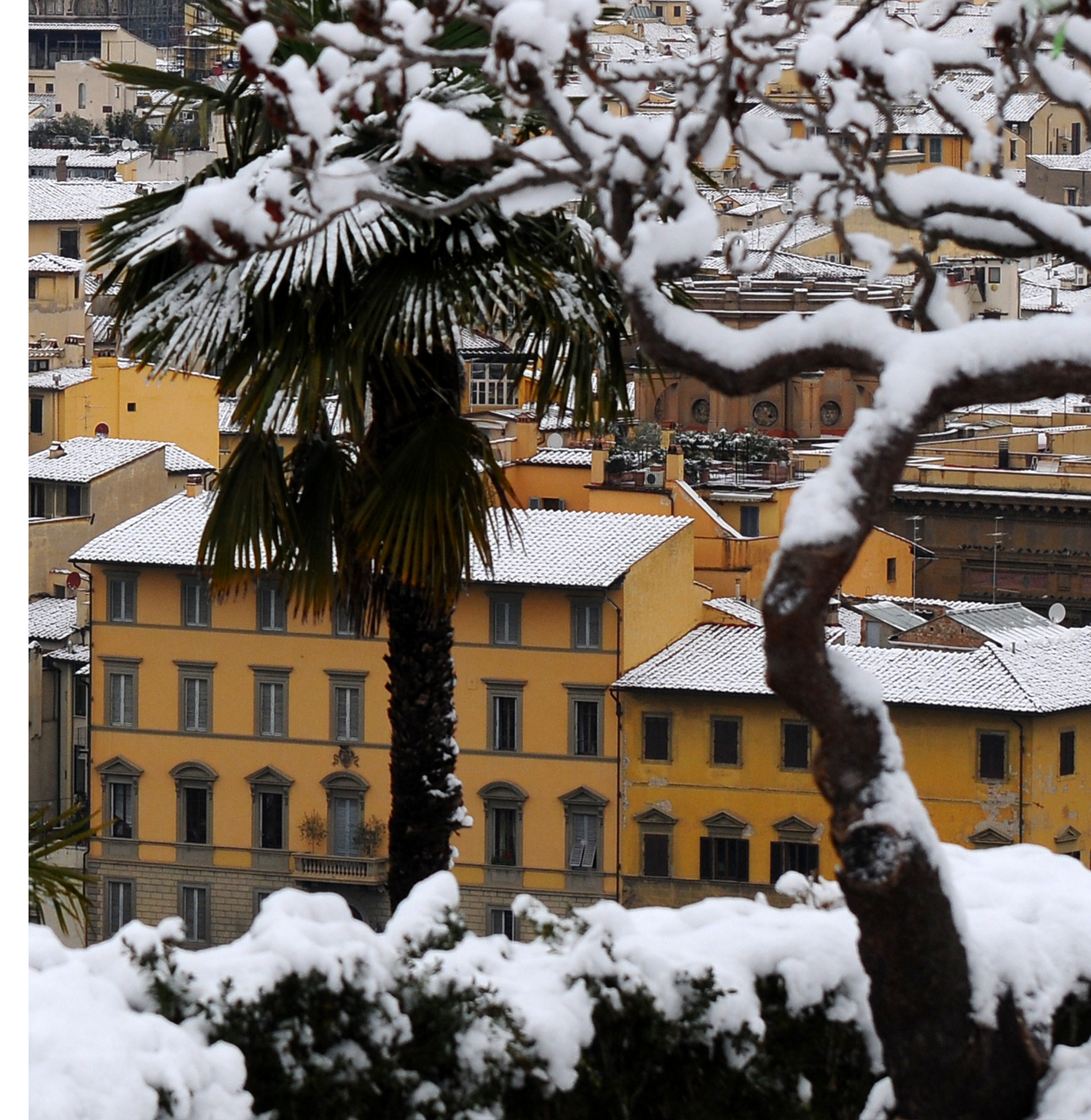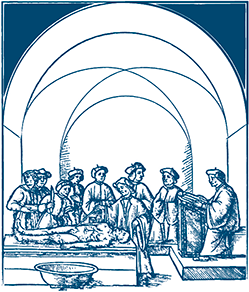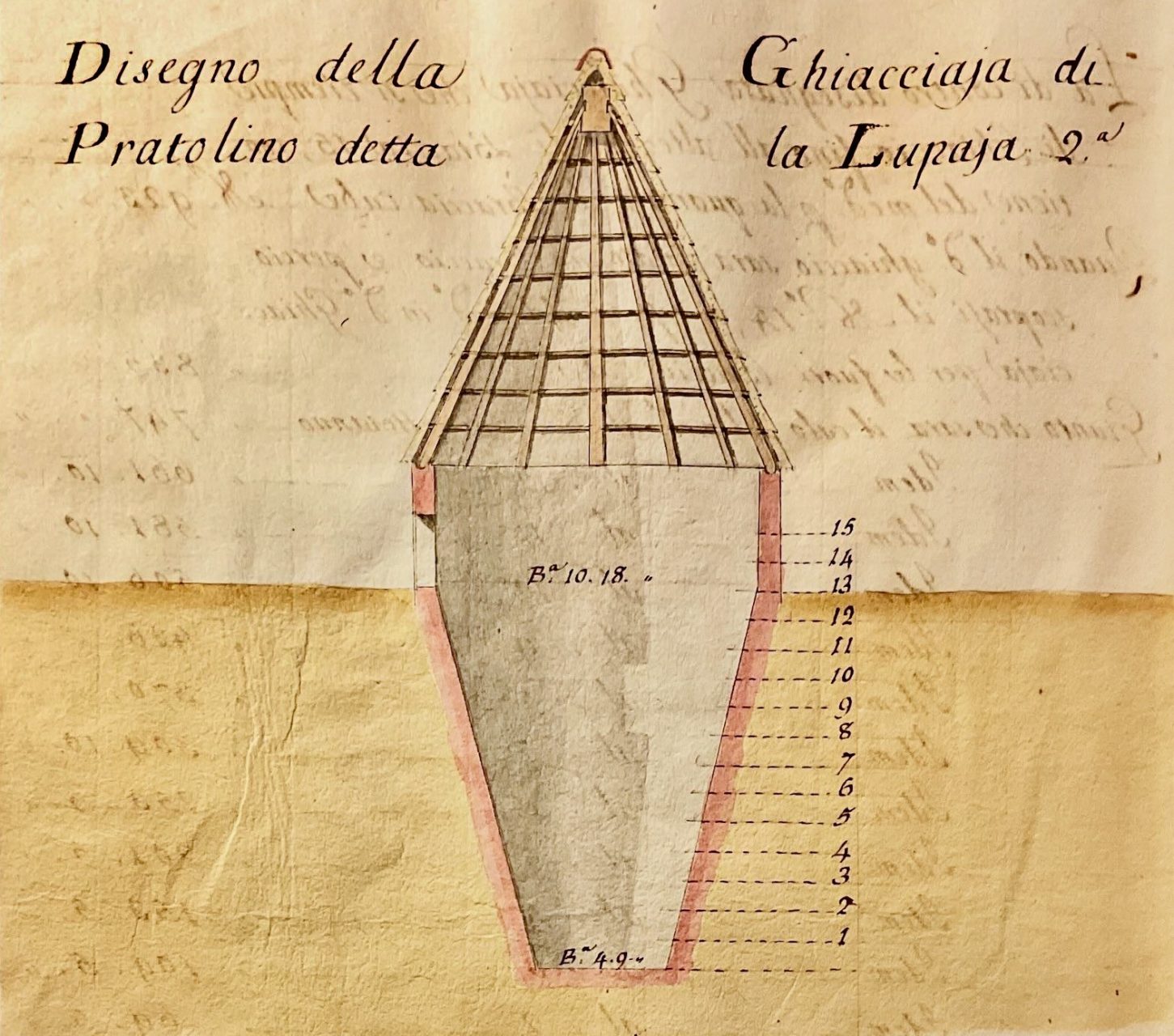Snow, Health and Death in Florence


FORMA FLUENS
Histories of the Microcosm
Snow, Health and Death
in Francesco De Medici's Florence
Anna Speyart
Princeton University
Santorio Fellow

In 1576, the Tuscan physician Piero Nati da Bibbiena (fl. 1576) rolled his eyes at Florence’s newfound taste for ice-cold consumption. In a treatise on the health risks of cooling beverages with snow, he argued that “there is quite enough width in the middle between cold and hot” – a middle ground that everyone should stick to, rather than seeking out extremes.[1] [2]
While some refrigeration was acceptable, the coldness of snow was far greater than that of even the coolest water and therefore excessive.[3] Florentines had previously been satisfied with the “very refreshing and clear waters” available in the city’s many excellent wells, which were also used to cool wine and fruits in summer. Now, however, they had adopted the opinion “that snow is not harmful, but healthy and good, and they have started using it universally, keeping public shops open for it around the year.”[4] The practice of storing winter’s snow and ice for year-round consumption had been known around the world since antiquity.[5] In Southern Europe, snow and ice made a spectacular comeback during the sixteenth century, when they transitioned from staples of luxury consumption to more widely available products in most large cities. Snow and ice were primarily used to chill drinks and fruits, delivering a degree of cold that cellars and wells alone were unable to provide.
Preserving winter’s frost for summer refrigeration was an infrastructural challenge that required significant labor and clever use of the effects of the seasons, altitude, and insulating materials on temperature. In Piero Nati’s Florence, too, the Grand Duke Francesco de’ Medici (r. 1574-1587) invested in expanding year-round snow supplies in and around his city. Snow pits emerged at his villa in Pratolino, which Michel de Montaigne remarked on during his journey through the region: “We also saw some very wide holes in the ground where they keep a large quantity of snow all year round; and it is placed on a litter of broom, and then all this is covered, up to a great height, in the form of a pyramid, with thatch, like a little barn.”[6]
Differences in taste and geography created variation in early modern methods for harvesting and storing frost, but Montaigne’s travel diary accurately described the key components of cold storage in snow pits or ice houses. Stored underground, snow and ice gathered in winter could survive the seasons if they were kept protected from warm air and rain with straw or other insulating materials. In Francesco’s day, such snow pits and ice houses could be found scattered across the Apennines closest to Florence, from Vallombrosa to Pistoia.
Anna Speyart is a PhD Candidate at Princeton University where she is writing a dissertation on the science and technology of freezing which traces the use of ice and snow from harvest to application in scientific, medical, and consumer contexts of early modernity. Anna received a BA in History from University College London (UCL) and an MA in Cultural and Intellectual History from the Warburg Institute where she worked on games and play in sixteenth-century erudite culture. In the Spring of 2024, she will be a visiting student at the École Normale Supérieure (ENS-PSL) in Paris.
This early modern increase in the use of snow and ice prompted a fierce response in the medical republic of letters: between 1550 and 1750, dozens of physicians from across Europe published treatises debating the risks and benefits of cold drinks. Among the earliest and most influential of these treatises was the Libro de la nieve (1571) by the Spanish physician Nicolás Monardes (1492-1588), which was translated three times and which circulated widely in Europe. While the earliest treatises had condemned chilling drinks with snow, Monardes’s work was among the first to endorse the practice and proclaim its benefits.[7]
Snow-chilled drinks, he listed, could among other things relieve hot livers, prevent plague, temper summer’s excessive heat, enhance appetite, enliven melancholics, prevent drunkenness, quench thirst, alleviate pain, and aid digestion.[8]
Monardes also cited about a dozen ancient sources and medical authorities, ranging from Seneca and Pliny to Galen and Avicenna, as evidence for the widespread use of snow since antiquity. Though most of these classical authors had been ambiguous at best about the use of snow, Monardes regarded the collective heft of snow’s mentions across authoritative ancient texts as enough of an endorsement in its own right. “Let’s consider”, he argued “how much delight the ancients drew from cold drinks, especially those chilled with snow, because they were wise and discerning people who pursued their health and preservation with great diligence.” If the ancients did it, then why shouldn’t we? [9]
Monardes regarded chilling drinks mostly as a matter of taste and delight, because “who can resist cold drinks in times of great heat in summer,” when feeling hot, weary, parched, and out of breath?[10] Still, he considered some categories of consumers more suited to cold consumption than others. Citing Galen, he argued that chilled drinks were especially appropriate for “men who have a lot of business and who take care of many things, like the governors of cities or republics and their ministers […] and those who toil much with physical labor (like soldiers) or with other great efforts (like those who walk long distances).”[11] Conversely, Monardes advised moderation in cold drinks among those who lived a life of leisure, because they never got hot enough to need iced water.
The Italian translation of Monardes’s treatise appeared in Florence in 1574. Piero Nati probably wrote his 1576 treatise in part as a response to Monardes and he dedicated his work to Francesco de’ Medici. Nati complained that there were “plenty of learned and discerning individuals who have publicly written in praise of snow to cool wine, citing many serious and trustworthy authors (Latin, Greek, and Arabic).”[12]
Again and again, Nati warned his readers against the harmful effects of consuming snow, even among the young and healthy. It could damage the teeth, liver, and intestines, for example, as well as causing coughs, flatulence, kidney stones and indigestion. More seriously, Nati warned against the harm that the ice-cold drinks did to veins, which could burst, and to the heart, lungs, and kidneys. The damage done to these internal body parts, he warned, was not immediately apparent, but would manifest over time. Princes who had the habit of consuming everything iced would pay for it in the end, when they were molested by incurable diseases that would kill them before their time.[13]
It is unlikely that Francesco de’ Medici, dedicatee of Nati’s treatise, ever read the physician’s warnings against iced drinks and foods. It is certain that he would not have heeded them. The physicians who attended to him reported that, on top of a predilection for unhealthy food, “his drinks and many of these foods are cooled with snow or ice at whichever time of the year.” When he fell severely ill in October 1587, “he ignored the precepts of physicians, drank and gargled with water and wine cooled with snow and even cooled his syrups with snow.” [14]
Another account of his feverish final days described him using a bed warmer filled with snow, ice to cool all his pills and medicines, iced water to wash them down with, and even snow to rub his hands in.[15] Yet even the most bountiful supply of snow and ice in all of Tuscany could not save Francesco: the disease felled him and his wife, Bianca Cappello, within days of each other.
A long yet forgotten life, on the other hand, awaited the snow and ice of early modern Florence. Under Francesco’s successors, Florence continued to expand its harvest and storage facilities for frost, developing increasingly sophisticated methods to promote, preserve, distribute, and administer cold as needed. The Florentine frost network remained in place until the early twentieth century, when ice manufacturing plants eventually replaced the natural ice industry that had kept the city cool for centuries.









